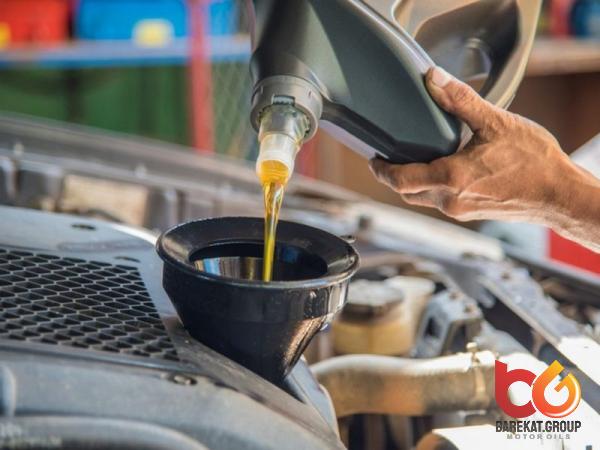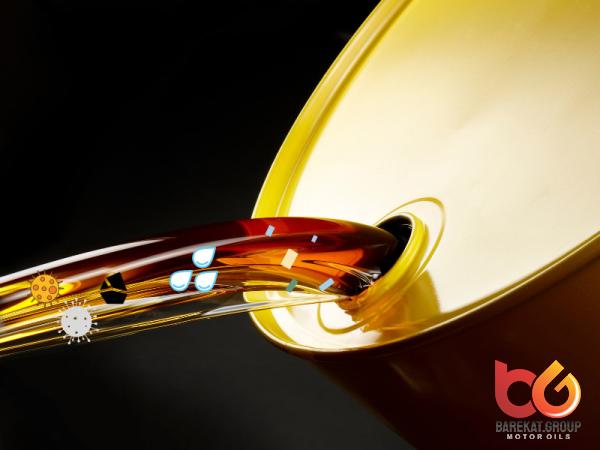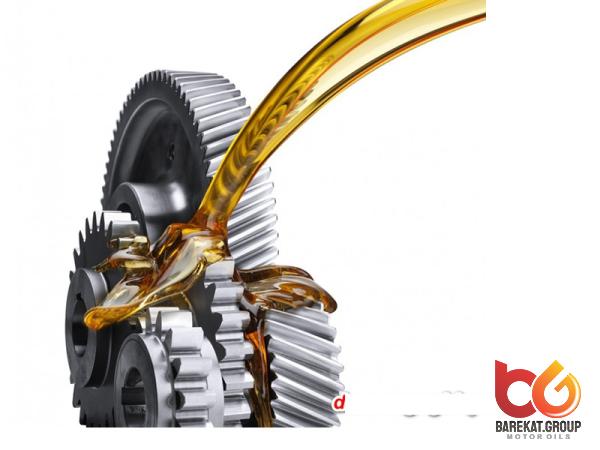Understanding Viscosity in Lubricating Oils: A Comprehensive Guide Introduction: Lubricating oils play a crucial role in reducing friction and wear between moving parts within various machinery and automotive engines. One fundamental characteristic of lubricating oils is their viscosity. Viscosity refers to the measure of a fluid’s resistance to flow. Understanding viscosity is essential for selecting the appropriate lubricating oil to ensure optimal operation and longevity of equipment. This guide aims to provide a comprehensive overview of viscosity in lubricating oils, its measurement, importance, factors affecting it, and methods for maintaining viscosity in various applications. 1. Definition and Importance of Viscosity: Viscosity is the property of a fluid that determines its resistance to flow. In lubricating oils, viscosity directly influences the oil’s ability to provide a protective film between moving surfaces. It affects the oil’s ability to flow and distribute evenly, preventing metal-to-metal contact and reducing friction. 2. Measurement of Viscosity: Viscosity is measured using various methods, with the two most common being kinematic viscosity and dynamic viscosity. Kinematic viscosity is measured using a viscometer and is expressed as centistokes (cSt), while dynamic viscosity is determined using instruments like a rotational viscometer and is expressed in units of Pascal-seconds (Pa·s) or centipoise (cP). Both methods provide valuable information for selecting the right type of lubricating oil. 3. Viscosity Index (VI): Viscosity index is a numerical value used to describe how the viscosity of an oil changes with temperature fluctuations. Oils with high viscosity index values have minimal viscosity changes, making them suitable for applications exposed to varying temperature conditions. This index enables users to predict how an oil’s viscosity will perform in different operating environments. 4. Factors Affecting Viscosity: Several factors can influence the viscosity of lubricating oil, including temperature, pressure, shear rate, additives, and contamination. Temperature changes have the most significant impact, as increased temperature reduces oil viscosity, potentially leading to inadequate lubrication.
Engine oil
 Pressure and shear rate can also alter the viscosity, making it crucial to consider these factors when selecting an oil for specific applications. 5. Viscosity Grades and Standards: Lubricating oils are classified into viscosity grades based on their viscosity characteristics. The Society of Automotive Engineers (SAE) has established a viscosity grading system for engine oils, defining several viscosity grades such as SAE 0W-20, 5W-30, 10W-40, etc. These classifications provide manufacturers and users with a standardized system for selecting the appropriate oil for different equipment and operating conditions. 6. Importance of Maintaining Viscosity: Maintaining the proper viscosity of lubricating oil is vital for ensuring optimal equipment performance and longevity. Insufficient viscosity can lead to increased friction, wear, and inefficient energy transfer, while excessive viscosity can cause issues like increased energy consumption and reduced flow through lubrication systems. Regular oil analysis, temperature monitoring, and adherence to manufacturers’ guidelines are essential for maintaining the desired viscosity. 7. Viscosity Modifiers and Additives: Viscosity modifiers and additives are commonly used to enhance the performance of lubricating oils. Viscosity modifiers are polymers that help maintain the oil’s viscosity at varying temperatures, reducing viscosity changes. Additives, on the other hand, offer additional properties such as corrosion protection, oxidation resistance, and anti-wear characteristics, enhancing the overall performance of the lubricating oil. 8. Industrial Applications: Viscosity plays a critical role in various industrial applications. From automotive engines and industrial machinery to hydraulic systems and gearboxes, understanding the specific viscosity requirements is crucial for selecting the right lubricating oil. Each application has different demands, and considering factors such as operating temperature, speed, load, and environment is essential for optimal lubrication. 9. Automotive Applications: In automotive applications, lubricating oils with appropriate viscosity are essential for engine performance and longevity. Understanding oil viscosity requirements based on OEM recommendations, driving conditions, and local climate is crucial for maintaining the vehicle’s efficiency. Modern vehicles often require oils with lower viscosities to improve fuel efficiency and meet emission regulations. 10. Challenges and Future Trends: As technology advances and demands for higher efficiency increase, lubricating oils face new challenges. The need for more robust lubricants capable of operating under extreme conditions, while maintaining their viscosity, is becoming critical. Researchers and lubricant manufacturers are continuously developing new lubrication technologies, exploring nanotechnology-based solutions, and focusing on reducing friction and wear. Conclusion: Viscosity is a critical property of lubricating oils, impacting the performance, efficiency, and longevity of machinery and engines.
Pressure and shear rate can also alter the viscosity, making it crucial to consider these factors when selecting an oil for specific applications. 5. Viscosity Grades and Standards: Lubricating oils are classified into viscosity grades based on their viscosity characteristics. The Society of Automotive Engineers (SAE) has established a viscosity grading system for engine oils, defining several viscosity grades such as SAE 0W-20, 5W-30, 10W-40, etc. These classifications provide manufacturers and users with a standardized system for selecting the appropriate oil for different equipment and operating conditions. 6. Importance of Maintaining Viscosity: Maintaining the proper viscosity of lubricating oil is vital for ensuring optimal equipment performance and longevity. Insufficient viscosity can lead to increased friction, wear, and inefficient energy transfer, while excessive viscosity can cause issues like increased energy consumption and reduced flow through lubrication systems. Regular oil analysis, temperature monitoring, and adherence to manufacturers’ guidelines are essential for maintaining the desired viscosity. 7. Viscosity Modifiers and Additives: Viscosity modifiers and additives are commonly used to enhance the performance of lubricating oils. Viscosity modifiers are polymers that help maintain the oil’s viscosity at varying temperatures, reducing viscosity changes. Additives, on the other hand, offer additional properties such as corrosion protection, oxidation resistance, and anti-wear characteristics, enhancing the overall performance of the lubricating oil. 8. Industrial Applications: Viscosity plays a critical role in various industrial applications. From automotive engines and industrial machinery to hydraulic systems and gearboxes, understanding the specific viscosity requirements is crucial for selecting the right lubricating oil. Each application has different demands, and considering factors such as operating temperature, speed, load, and environment is essential for optimal lubrication. 9. Automotive Applications: In automotive applications, lubricating oils with appropriate viscosity are essential for engine performance and longevity. Understanding oil viscosity requirements based on OEM recommendations, driving conditions, and local climate is crucial for maintaining the vehicle’s efficiency. Modern vehicles often require oils with lower viscosities to improve fuel efficiency and meet emission regulations. 10. Challenges and Future Trends: As technology advances and demands for higher efficiency increase, lubricating oils face new challenges. The need for more robust lubricants capable of operating under extreme conditions, while maintaining their viscosity, is becoming critical. Researchers and lubricant manufacturers are continuously developing new lubrication technologies, exploring nanotechnology-based solutions, and focusing on reducing friction and wear. Conclusion: Viscosity is a critical property of lubricating oils, impacting the performance, efficiency, and longevity of machinery and engines.
Specifications of Engine oil
 Understanding viscosity, measuring it accurately, and selecting the appropriate lubricating oil based on various factors are essential for optimal operation. Regular monitoring and maintenance of viscosity, along with the use of appropriate additives, ensure that equipment operates at peak efficiency and durability. Continued research and development will shape the future of lubricating oils, providing innovative solutions to meet ever-evolving technological demands.Understanding Viscosity in Lubricating Oils: A Comprehensive Guide 1. The Role of Viscosity in Lubrication Efficiency: The viscosity of a lubricating oil directly influences its ability to form a protective film between moving parts. It ensures that there is sufficient lubricant present to reduce friction and wear, preventing metal-to-metal contact. Inadequate viscosity can lead to insufficient lubrication, resulting in increased friction, wear, and potential equipment failure. On the other hand, excessive viscosity can hinder the oil’s ability to flow and distribute evenly, reducing its effectiveness as a lubricating agent. 2. Selecting the Right Viscosity Grade for Specific Applications: The selection of lubricating oil with the appropriate viscosity grade is crucial for optimal equipment performance. Different applications have varying demands, and each requires a specific viscosity range to ensure effective lubrication. For instance, high-speed machinery may require oils with lower viscosities to minimize resistance and maximize energy efficiency. On the other hand, heavy machinery operating under extreme conditions may require oils with higher viscosities to handle increased loads and reduce wear. 3. Understanding Viscosity Index and Its Importance: Viscosity index (VI) is a vital parameter used to evaluate how an oil’s viscosity changes with temperature variations. It indicates the oil’s resistance to viscosity changes caused by temperature fluctuations. Lubricating oils with a higher VI demonstrate minimal viscosity changes as temperatures rise or fall, making them more suitable for applications exposed to varying operating conditions. This property ensures that the oil maintains its viscosity and lubricating properties across a wide temperature range, providing consistent protection to the equipment. 4. Factors Affecting Viscosity: Several factors can influence the viscosity of lubricating oil. Temperature is the most significant factor, as it directly affects the fluid’s viscosity. As temperature increases, the viscosity of the oil decreases, and vice versa. Pressure and shear rate can also affect viscosity, especially in high-pressure systems or applications involving fast-moving parts. Additionally, the presence of additives, contamination, and chemical reactions within the oil can alter its viscosity.
Understanding viscosity, measuring it accurately, and selecting the appropriate lubricating oil based on various factors are essential for optimal operation. Regular monitoring and maintenance of viscosity, along with the use of appropriate additives, ensure that equipment operates at peak efficiency and durability. Continued research and development will shape the future of lubricating oils, providing innovative solutions to meet ever-evolving technological demands.Understanding Viscosity in Lubricating Oils: A Comprehensive Guide 1. The Role of Viscosity in Lubrication Efficiency: The viscosity of a lubricating oil directly influences its ability to form a protective film between moving parts. It ensures that there is sufficient lubricant present to reduce friction and wear, preventing metal-to-metal contact. Inadequate viscosity can lead to insufficient lubrication, resulting in increased friction, wear, and potential equipment failure. On the other hand, excessive viscosity can hinder the oil’s ability to flow and distribute evenly, reducing its effectiveness as a lubricating agent. 2. Selecting the Right Viscosity Grade for Specific Applications: The selection of lubricating oil with the appropriate viscosity grade is crucial for optimal equipment performance. Different applications have varying demands, and each requires a specific viscosity range to ensure effective lubrication. For instance, high-speed machinery may require oils with lower viscosities to minimize resistance and maximize energy efficiency. On the other hand, heavy machinery operating under extreme conditions may require oils with higher viscosities to handle increased loads and reduce wear. 3. Understanding Viscosity Index and Its Importance: Viscosity index (VI) is a vital parameter used to evaluate how an oil’s viscosity changes with temperature variations. It indicates the oil’s resistance to viscosity changes caused by temperature fluctuations. Lubricating oils with a higher VI demonstrate minimal viscosity changes as temperatures rise or fall, making them more suitable for applications exposed to varying operating conditions. This property ensures that the oil maintains its viscosity and lubricating properties across a wide temperature range, providing consistent protection to the equipment. 4. Factors Affecting Viscosity: Several factors can influence the viscosity of lubricating oil. Temperature is the most significant factor, as it directly affects the fluid’s viscosity. As temperature increases, the viscosity of the oil decreases, and vice versa. Pressure and shear rate can also affect viscosity, especially in high-pressure systems or applications involving fast-moving parts. Additionally, the presence of additives, contamination, and chemical reactions within the oil can alter its viscosity.
Buy Engine oil
 5. Viscosity Modifications Using Additives: Viscosity modifiers are often added to lubricating oils to enhance their performance in extreme temperature conditions. These polymers adjust the oil’s viscosity by enlarging the oil molecules at high temperatures, preventing a rapid drop in viscosity. As the temperature decreases, these molecules contract, ensuring that the oil maintains its desired viscosity range. Viscosity modifiers enable oils to perform effectively in a wide range of operating temperatures, reducing wear and maximizing equipment lifespan. 6. Maintaining Viscosity Over Time: To ensure optimal performance and prolonged equipment life, it is essential to monitor and maintain the viscosity of lubricating oils over time. Regular oil analysis can provide insights into the health of the oil, including its viscosity characteristics. Monitoring temperature fluctuations, as well as adhering to manufacturers’ recommendations regarding oil change intervals, can help maintain proper viscosity. Additionally, routine maintenance practices, such as proper filtration, can prevent contaminants from altering the oil’s viscosity. 7. The Significance of Viscosity in Automotive Applications: In automotive applications, selecting the right viscosity oil is critical for engine performance and longevity. The viscosity requirements of automotive engine oils are typically specified by vehicle manufacturers to ensure optimal lubrication in various driving conditions. Modern vehicles often utilize oils with lower viscosities, such as 0W-20 or 5W-30, to improve fuel efficiency and meet environmental regulations. Adhering to these viscosity recommendations is vital for maintaining the engine’s efficiency and reducing friction and wear. 8. Industrial Applications and Viscosity Considerations: Different industries, such as manufacturing, mining, and power generation, rely on lubricating oils to ensure smooth machinery operation.
5. Viscosity Modifications Using Additives: Viscosity modifiers are often added to lubricating oils to enhance their performance in extreme temperature conditions. These polymers adjust the oil’s viscosity by enlarging the oil molecules at high temperatures, preventing a rapid drop in viscosity. As the temperature decreases, these molecules contract, ensuring that the oil maintains its desired viscosity range. Viscosity modifiers enable oils to perform effectively in a wide range of operating temperatures, reducing wear and maximizing equipment lifespan. 6. Maintaining Viscosity Over Time: To ensure optimal performance and prolonged equipment life, it is essential to monitor and maintain the viscosity of lubricating oils over time. Regular oil analysis can provide insights into the health of the oil, including its viscosity characteristics. Monitoring temperature fluctuations, as well as adhering to manufacturers’ recommendations regarding oil change intervals, can help maintain proper viscosity. Additionally, routine maintenance practices, such as proper filtration, can prevent contaminants from altering the oil’s viscosity. 7. The Significance of Viscosity in Automotive Applications: In automotive applications, selecting the right viscosity oil is critical for engine performance and longevity. The viscosity requirements of automotive engine oils are typically specified by vehicle manufacturers to ensure optimal lubrication in various driving conditions. Modern vehicles often utilize oils with lower viscosities, such as 0W-20 or 5W-30, to improve fuel efficiency and meet environmental regulations. Adhering to these viscosity recommendations is vital for maintaining the engine’s efficiency and reducing friction and wear. 8. Industrial Applications and Viscosity Considerations: Different industries, such as manufacturing, mining, and power generation, rely on lubricating oils to ensure smooth machinery operation.
Engine oil + buy and sell
 Viscosity considerations vary based on the specific application. For instance, in hydraulic systems, oils with specific viscosity ranges are required to maintain precise control over pressure and flow. In gearboxes and industrial machinery, oils with appropriate viscosity grades are crucial for load-carrying capacities and reducing wear. Understanding the unique requirements of each application is essential for selecting the right lubricating oil. 9. High-Performance Oils for Extreme Conditions: Certain applications, such as those involving high operating temperatures or extreme loads, require high-performance lubricating oils. These oils are engineered to have enhanced viscosity characteristics, allowing them to withstand demanding conditions without compromising their lubrication capabilities. They often contain advanced additives and higher viscosity index values to ensure stability and efficiency under extreme operating conditions. 10. Emerging Trends in Lubricating Oils: As technology evolves and environmental regulations become more stringent, lubricating oils are also adapting to meet new demands. Nanotechnology-based lubricants are being developed, offering superior lubrication properties, reduced friction, and extended equipment life. Novel additives and base oil formulations are continuously being researched and developed to improve lubricity, reduce energy consumption, and minimize environmental impact. Additionally, biodegradable and eco-friendly lubricants are gaining traction in industries where sustainability is a priority. Conclusion: Viscosity is a crucial property of lubricating oils, directly impacting their ability to provide effective lubrication and prevent wear between moving parts. Understanding viscosity, selecting the appropriate viscosity grade for specific applications, and maintaining the desired viscosity over time are critical for ensuring optimal equipment performance and longevity. As technology advances, lubricating oils continue to evolve, ushering in new innovations to meet the ever-growing demands of various industries and the need for sustainable and high-performance lubrication solutions.
Viscosity considerations vary based on the specific application. For instance, in hydraulic systems, oils with specific viscosity ranges are required to maintain precise control over pressure and flow. In gearboxes and industrial machinery, oils with appropriate viscosity grades are crucial for load-carrying capacities and reducing wear. Understanding the unique requirements of each application is essential for selecting the right lubricating oil. 9. High-Performance Oils for Extreme Conditions: Certain applications, such as those involving high operating temperatures or extreme loads, require high-performance lubricating oils. These oils are engineered to have enhanced viscosity characteristics, allowing them to withstand demanding conditions without compromising their lubrication capabilities. They often contain advanced additives and higher viscosity index values to ensure stability and efficiency under extreme operating conditions. 10. Emerging Trends in Lubricating Oils: As technology evolves and environmental regulations become more stringent, lubricating oils are also adapting to meet new demands. Nanotechnology-based lubricants are being developed, offering superior lubrication properties, reduced friction, and extended equipment life. Novel additives and base oil formulations are continuously being researched and developed to improve lubricity, reduce energy consumption, and minimize environmental impact. Additionally, biodegradable and eco-friendly lubricants are gaining traction in industries where sustainability is a priority. Conclusion: Viscosity is a crucial property of lubricating oils, directly impacting their ability to provide effective lubrication and prevent wear between moving parts. Understanding viscosity, selecting the appropriate viscosity grade for specific applications, and maintaining the desired viscosity over time are critical for ensuring optimal equipment performance and longevity. As technology advances, lubricating oils continue to evolve, ushering in new innovations to meet the ever-growing demands of various industries and the need for sustainable and high-performance lubrication solutions.
Your comment submitted.